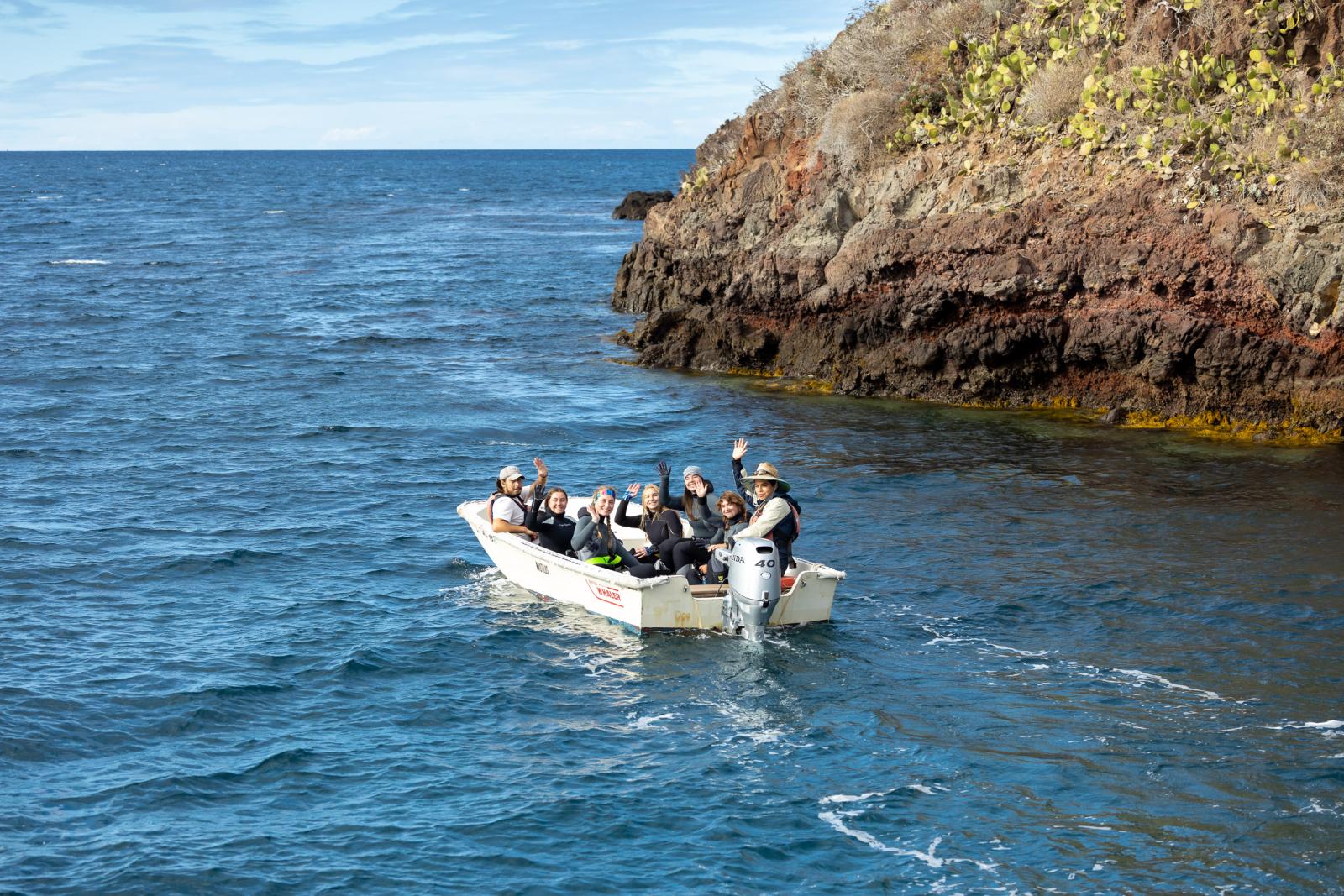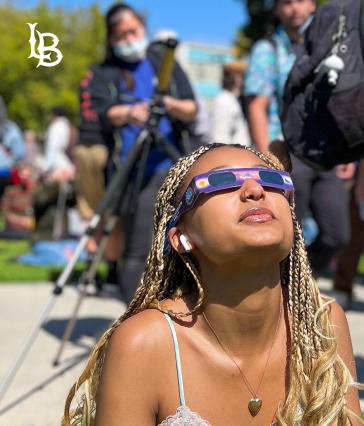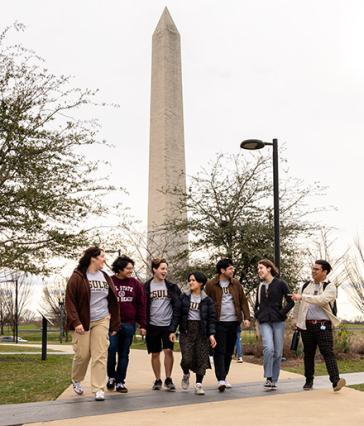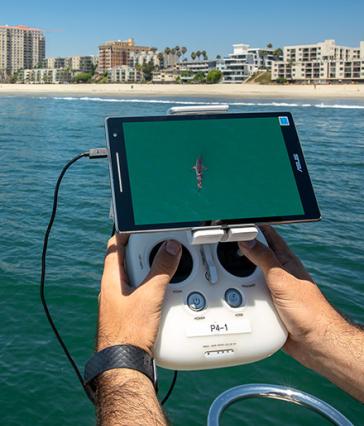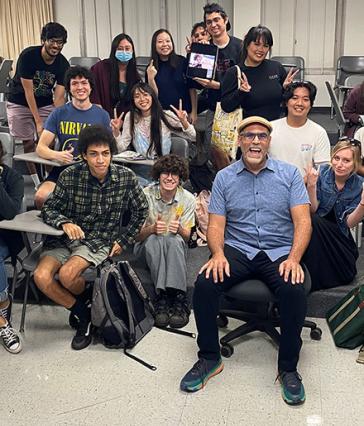Ocean studies program offers CSULB students chance to explore sea life off Catalina Island

For an entire semester, CSULB student Anthony McGinnis spent his days scuba diving while observing bat and shovelnose rays in a cove off Catalina Island, recording data and processing that information in a lab mere yards from the shore.
He hoped to learn whether the distribution of the rays’ prey and environmental factors like size of the grains of sand contributed to their population density.
Since the age of 4, McGinnis knew he wanted to study the sciences when his parents stocked up on BBC Earth VHS tapes. His passion for marine biology solidified by the time he reached 10th grade. By the time he arrived at CSULB he was ready for hands-on research.
“This is probably the best opportunity to get that experience,” said the fourth-year marine biology student recently while standing on a dock in a wetsuit and fins.
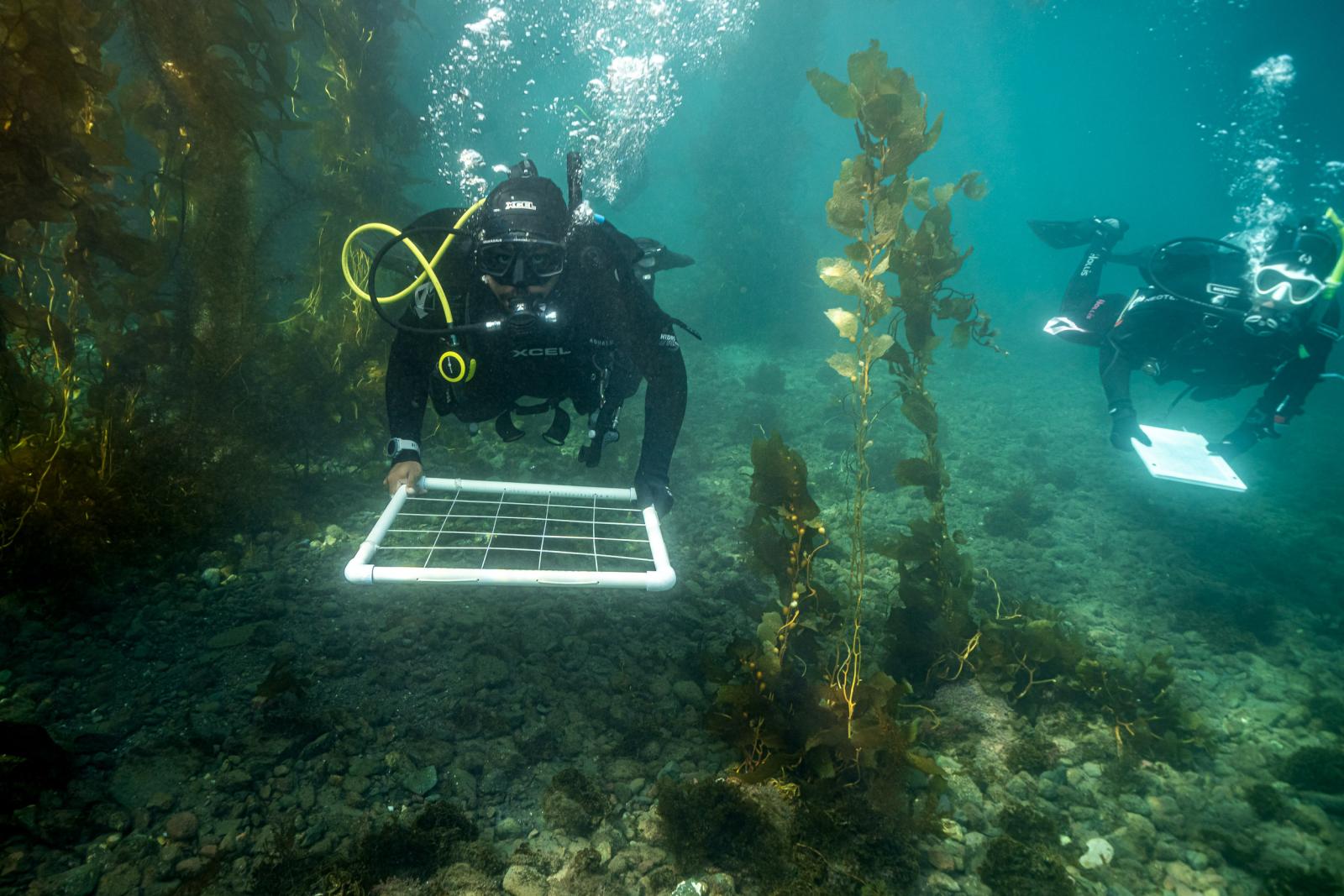
McGinnis was among 19 students from Cal State Long Beach and one from a sister CSU to live at the campus in Two Harbors, Catalina Island, sequestered from the demands of mainland life, while fully immersed in studying various aspects of the ocean.
“It’s a very unusual opportunity,” said Bengt Allen, an associate professor in the Department of Biological Sciences at CSULB. “Even for marine biology students.”
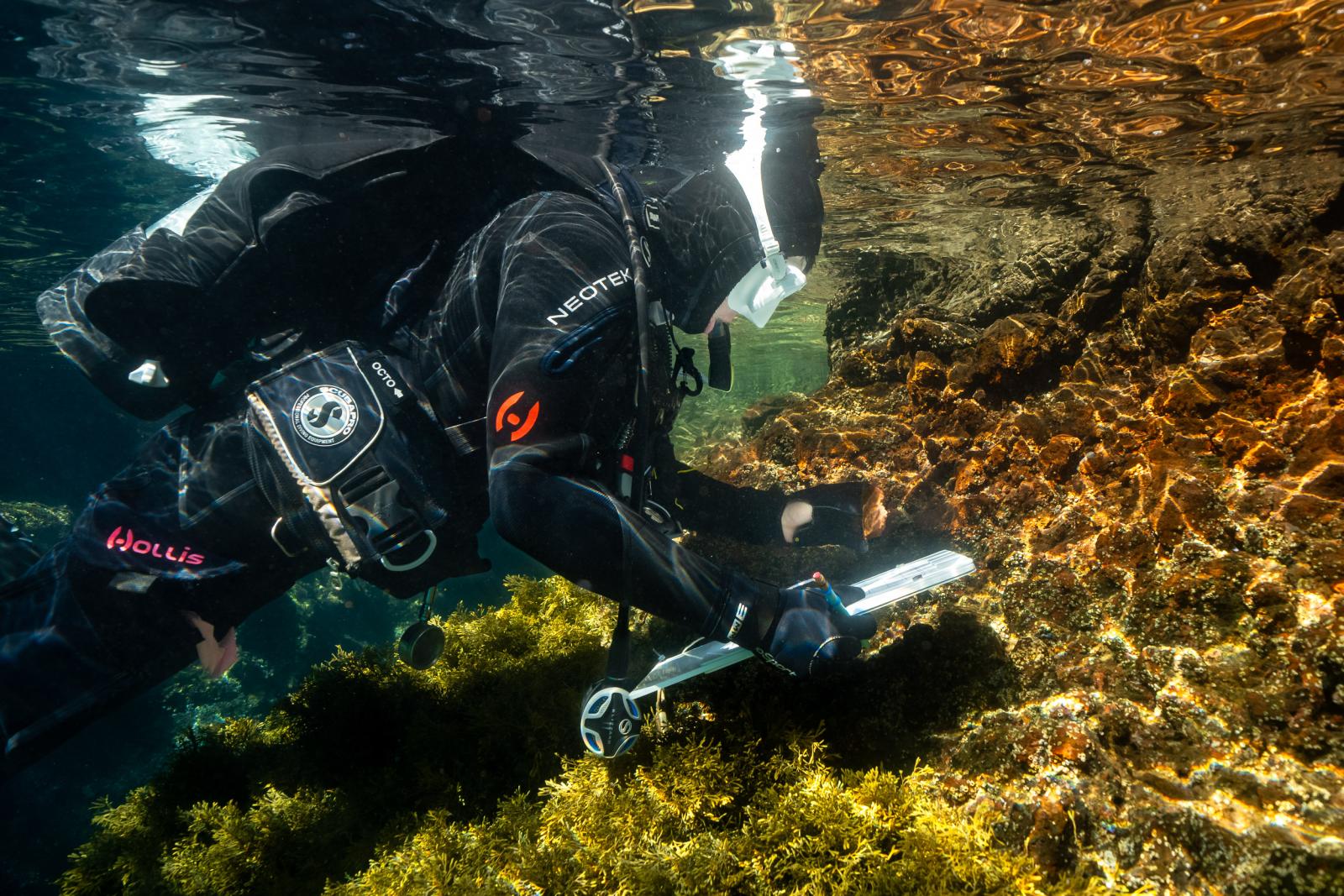
CSULB is among nine CSUs that comprise the Ocean Studies Institute. The consortium is part of the Southern California Marine Institute made up of 24 universities and foundations in the region. During the fall semester of 2023, CSULB served as the administrative CSU campus within the OSI.
For more than 20 years, The Beach has provided instructors to teach on the island, most recently serving as the administrative campus, giving students the experience of hands-on research, presenting their findings to friends and family at a symposium, and writing academic papers.
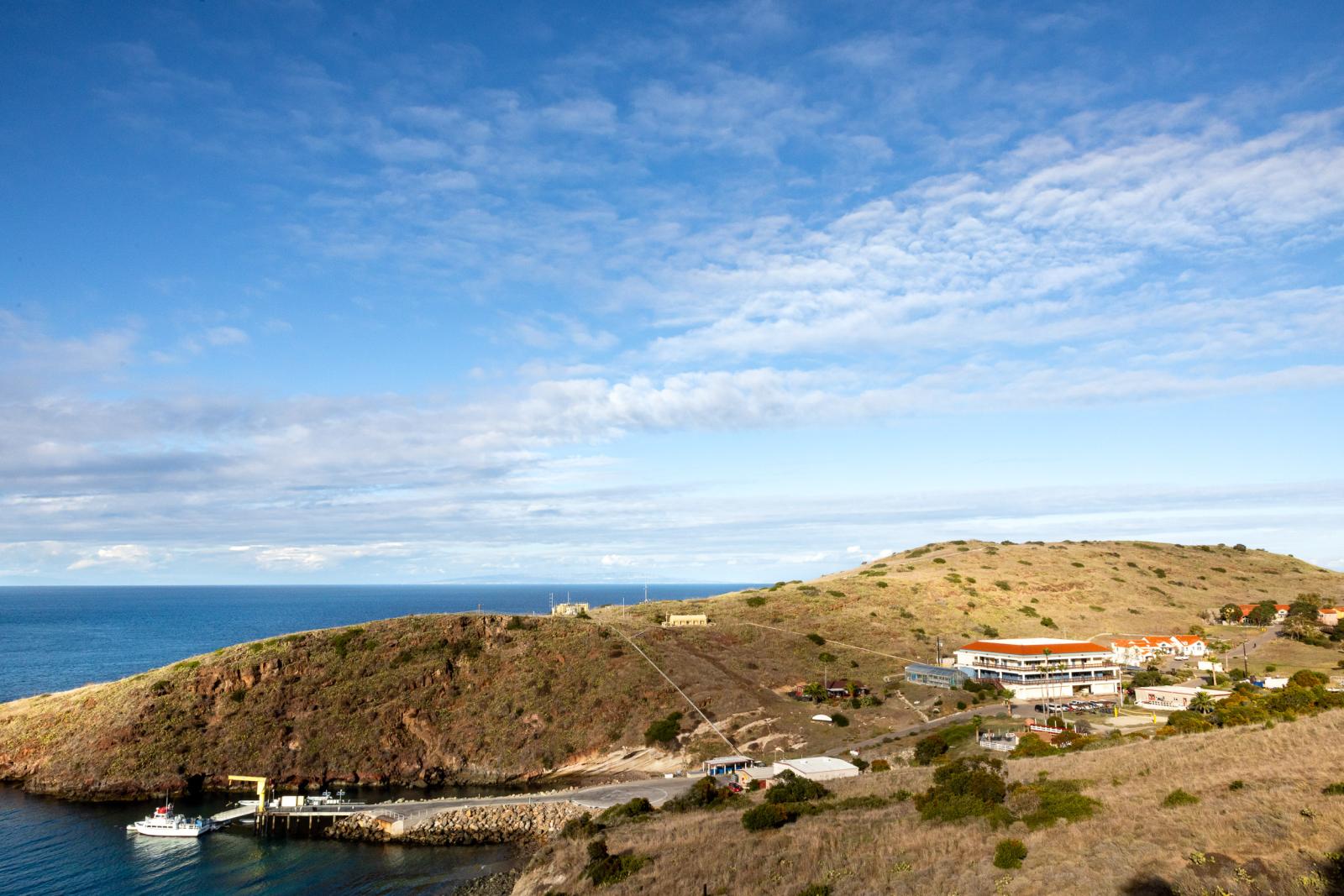
Of the students who go through the program, many go on to pursue an advanced degree after completing their undergraduate studies. Of the 92 students who participated in the program between 2004 and 2018, 27% went on to attend graduate school compared with 13% of STEM students who did not participate in the program.
For Emily Hibma, the semester in Catalina proved instrumental in her choice to attend CSULB. As a child, she sailed with her family to Cherry Cove in Catalina regularly.
“I just grew up in the ocean,” Hibma, a fourth-year student, said. “That’s why I chose CSULB, because they have this program.”
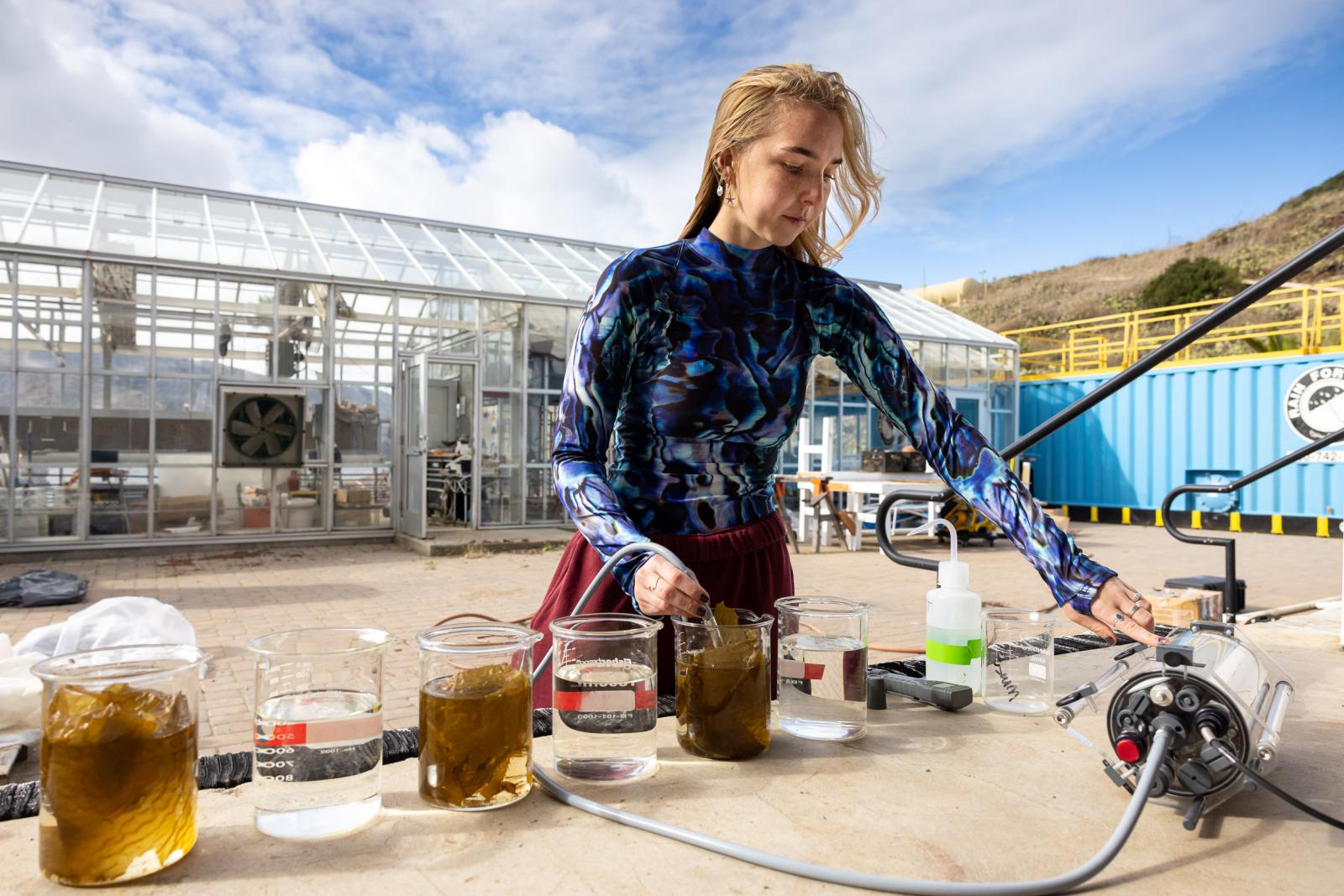
The undergraduate devoted her fall 2023 semester determining whether giant kelp ameliorated the effects of ocean acidification by measuring its photosynthetic yield.
“It’s something you don’t get in a normal class,” Hibma said. “I didn’t know what to expect. It’s awesome to see this stuff and then do it.”
Nearby, fourth-year student Lexi Canfield plucked two wavy turban snails from a fish tank and gently plopped them into separate jars to measure their metabolic rate with oxygen probes. Her thesis focused on whether warming ocean temperatures would cause them to become more active, possibly outpacing the growth of their food source: kelp.
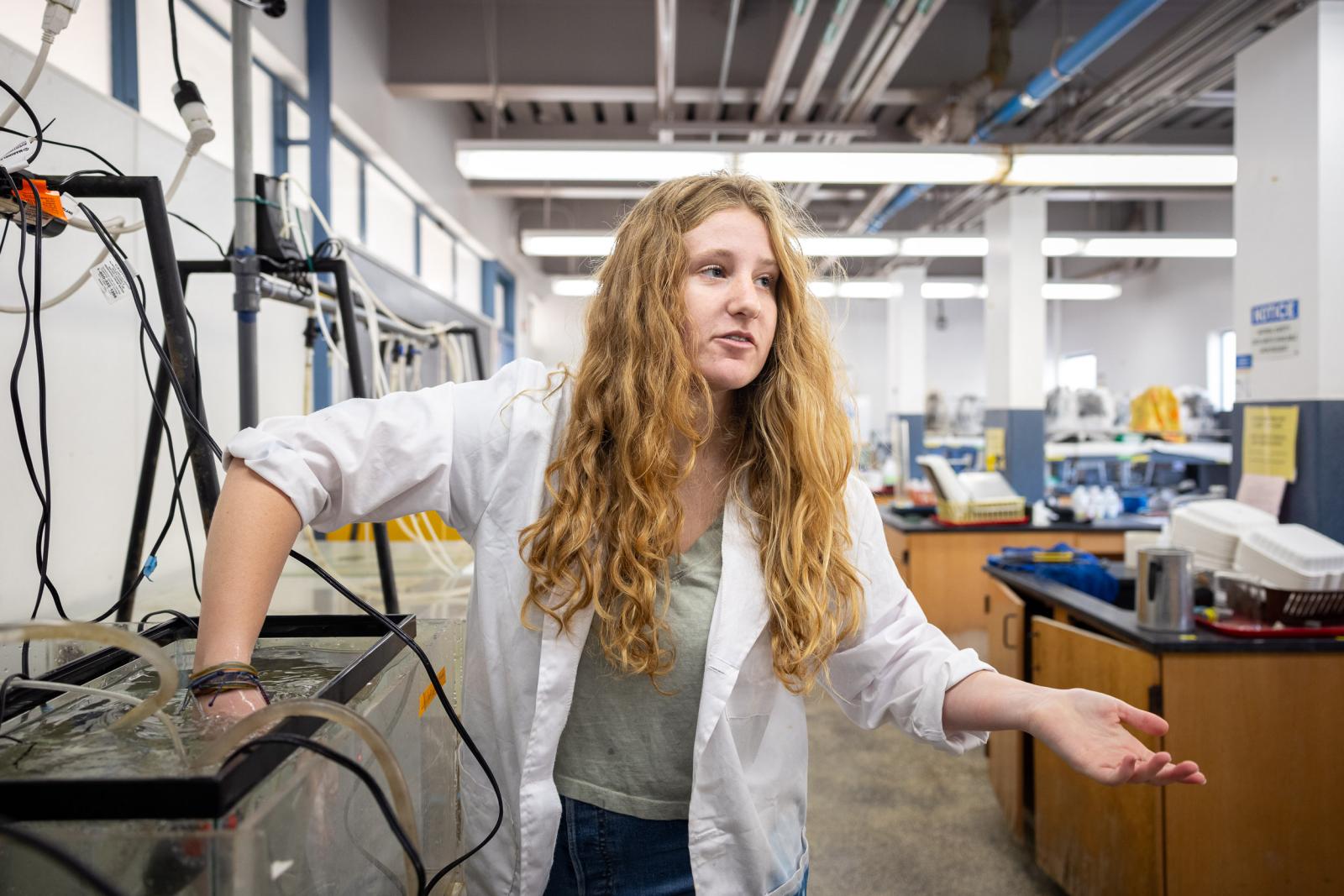
“I had never done marine biology research before,” Canfield said. “I thought (the Catalina semester) would be something in a classroom. It’s been a college-level research experience far more than I could have imagined. I hadn’t done any research in the field before and our first class here we spent a month in the water.”
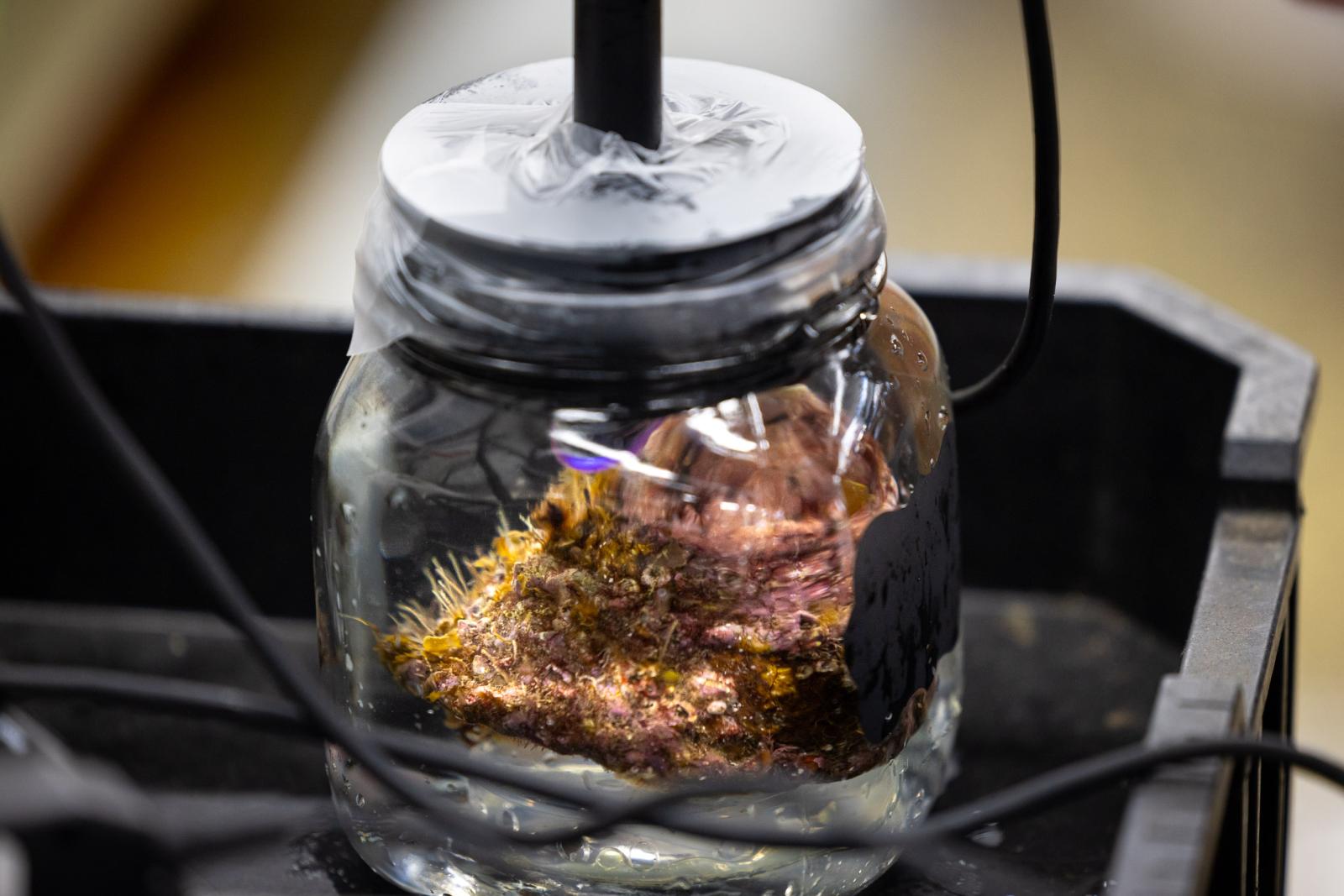
The campus resumed the Catalina program in 2023 after a yearslong hiatus due to the pandemic. Other hurdles to students attending the semester in Catalina include financial burdens.
The semester costs about $7,500 in addition to regular tuition, though a number of scholarships including the SCTC Catalina Semester Scholarship in the amount of $2,500 and CSU COAST Field Experiences Support program help offset those costs.

While students leave the program with experience in conducting research, writing it up, presenting and defending it in front of their peers, Allen hopes the Catalina semester instills students with the confidence that they are capable scientists.
“I think what they get at the end of this is that science is just done by people,” Allen said. “You can do this. They’re not some separate group of people.”
